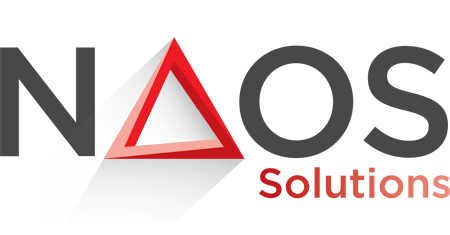Ensuring the success of a business goes beyond simply capturing the attention of potential clients and nurturing relationships with current ones; it also involves having top talent. But how can you attract the right individuals? The answer lies in effective employer branding.

WHAT IS EMPLOYER BRANDING?
Employer branding is a strategic approach that organizations use to promote themselves as desirable employers to attract and retain top talent. It involves showcasing the workplace culture, values, work environment, and benefits that would make the company an “employer of choice” for job seekers and current employees alike. To effectively implement these strategies, many companies utilize employer branding platforms like Welcome to the Jungle or LinkedIn Workplace or Commitment pages, which offer comprehensive solutions for showcasing workplace culture, values, and benefits.
Does Employer Branding Really Matter to You and Your Company?
Yes. A strong employer brand can significantly enhance your company’s ability to attract high-quality candidates. Career insight platform Glassdoor indicates that 69% of employees find it very important for their employer to have a brand they can take pride in. And more than 80% of employees would consider leaving their jobs for a company with a better reputation.
Additionally, companies with strong employer brands experience up to a 28% reduction in staff turnover, thereby cutting down substantial costs associated with hiring and training new employees by up to 43%.
EMPLOYER BRANDING STRATEGIES TO ATTRACT THE BEST TALENT

Define Your Employee Value Proposition (EVP)
The first step in building a strong employer brand is to develop a clear Employee Value Proposition or EVP.
Employee Value Proposition is a framework that outlines the unique benefits and offerings that you provide to your employees in exchange for their skills and commitment. A clearly defined EVP highlights what makes your organization unique, which can be particularly appealing to candidates looking for more than just salary—such as meaningful work or a strong commitment to social responsibility.
Salesforce, known for its exceptional EVP, emphasizes a culture of innovation and equality. The company’s EVP highlights perks like wellness reimbursements, time off for volunteer work, and its 1-1-1 philanthropic model. This clarity attracts candidates who value purpose-driven work and a strong sense of community.

Conduct an employer Branding Audit
Regularly assessing your current employer brand is essential to understanding its strengths and weaknesses. An audit lets you compare your desired employer brand with the employee experience. This can help you identify areas for improvement and ensure that your company’s messaging and how you present yourself across recruitment platforms accurately reflect your culture, values, and policies.
Audits can involve gathering employee feedback, analyzing online reviews, and assessing public perception on social media.
Microsoft regularly conducts employee surveys and monitors platforms like Glassdoor and LinkedIn to gather feedback about its workplace culture. After identifying areas for improvement, the company revamped its parental leave policy to better align with employees’ needs, significantly boosting its reputation as a family-friendly employer.
Create Compelling Content
Content plays a critical role in communicating your employer’s brand. Sharing employee success stories, showcasing company culture through videos or blogs, and highlighting social responsibility initiatives can engage potential candidates. User-generated content, such as testimonials from current employees, can also enhance authenticity and credibility.

HubSpot showcases its inclusive company culture through its Instagram account @HubSpotLife, where employees share their personal stories and experiences at the company. The initiative provides potential candidates with an authentic glimpse into the workplace and reinforces HubSpot’s reputation as a top employer in the tech industry.
Maximise Social Media
Use social media platforms, especially LinkedIn, to amplify your employer branding efforts. Regularly posting updates about company culture, employee achievements, and community involvement helps build a positive image. Engaging with potential candidates through targeted content can increase visibility and attract top talent.
Spotify takes to X and Instagram to share behind-the-scenes content under the handle @LifeatSpotify. Posts featuring employees enjoying workplace perks, such as music jam sessions or their dog-friendly offices, give candidates a relatable and inviting view of life at Spotify.
Invest in Employee Development
Demonstrating your commitment to employee growth through training programs, mentorship opportunities, and career advancement paths can make your organization more attractive to top talent.
Candidates increasingly seek employers who prioritize professional development and offer clear pathways for career progression. Moreover, offering continuous training ensures that staff are up-to-date with industry trends and technologies, which can lead to increased productivity and innovation within the organization.
AT&T invested over $1 billion in reskilling programs for its workforce to keep employees updated with emerging technologies like AI and 5G. Through its Future Ready initiative, employees can access online courses and certifications tailored to their career goals, positioning AT&T as an employer committed to professional growth.

Make Employees Brand Ambassadors
Encouraging employees to share their experiences on social media or through company channels can humanize your brand and provide authentic insights into the workplace culture.
When employees share their personal stories, successes, and challenges, it helps create a more relatable and transparent image of your company. This can help cultivate trust and engagement with your target audience and attract top talent who align with your values. You can showcase the unique personality and culture of your organization by giving employees their own voice to share their stories, which can set you apart from competitors and create a strong, positive brand identity.
CONCLUSION
When we think about employer branding strategies, HR is often the first department that comes to mind. While this is true, especially regarding the company’s efforts to promote its employer brand, the organization’s overall identity is influenced by various stakeholders.
These include the C-suite executives who define the values they wish to reinforce, the managers who guide their respective teams, the HR department that manages employee relations and sets policies, and the marketing team that shares company updates externally.
It is worth remembering that building your employer brand does not happen overnight. Not only are there many different moving pieces involved, but you need to get everyone on your team on the same page.

